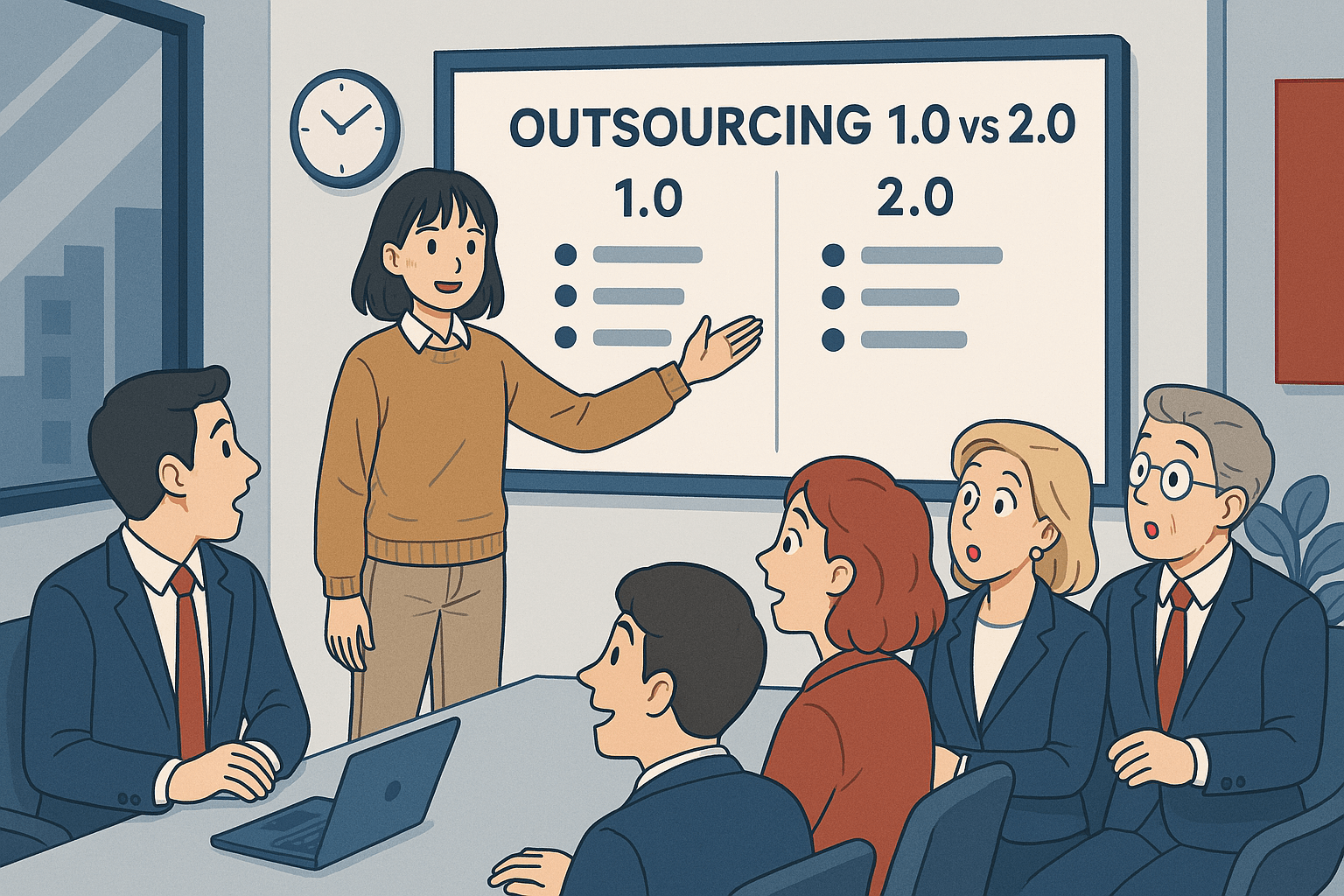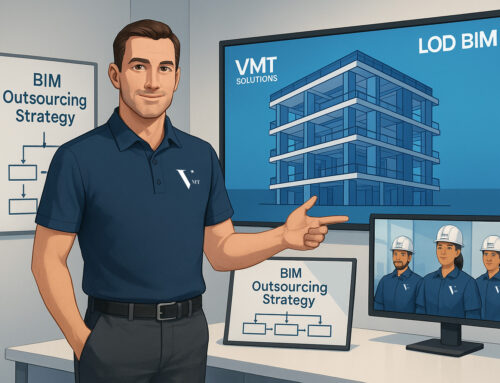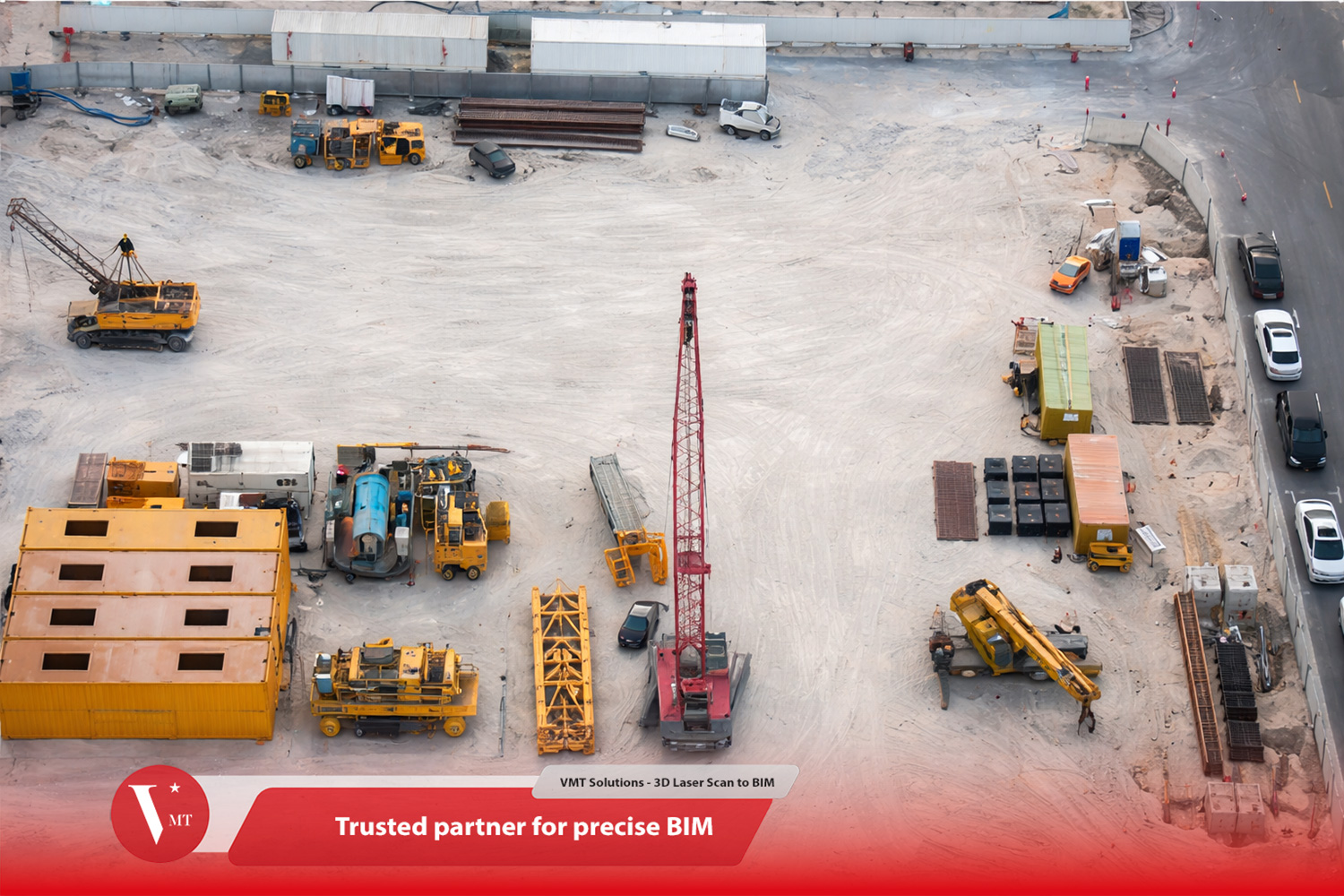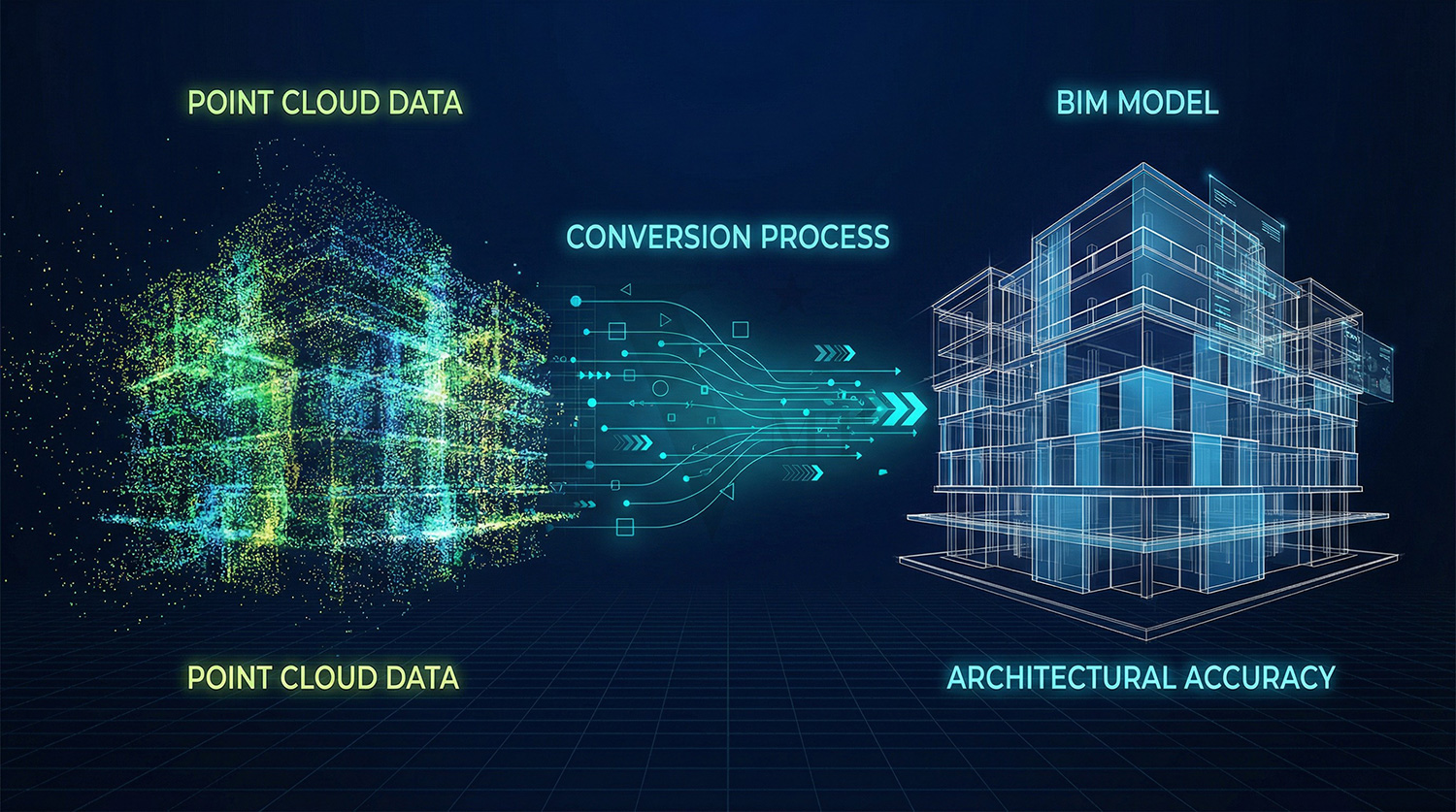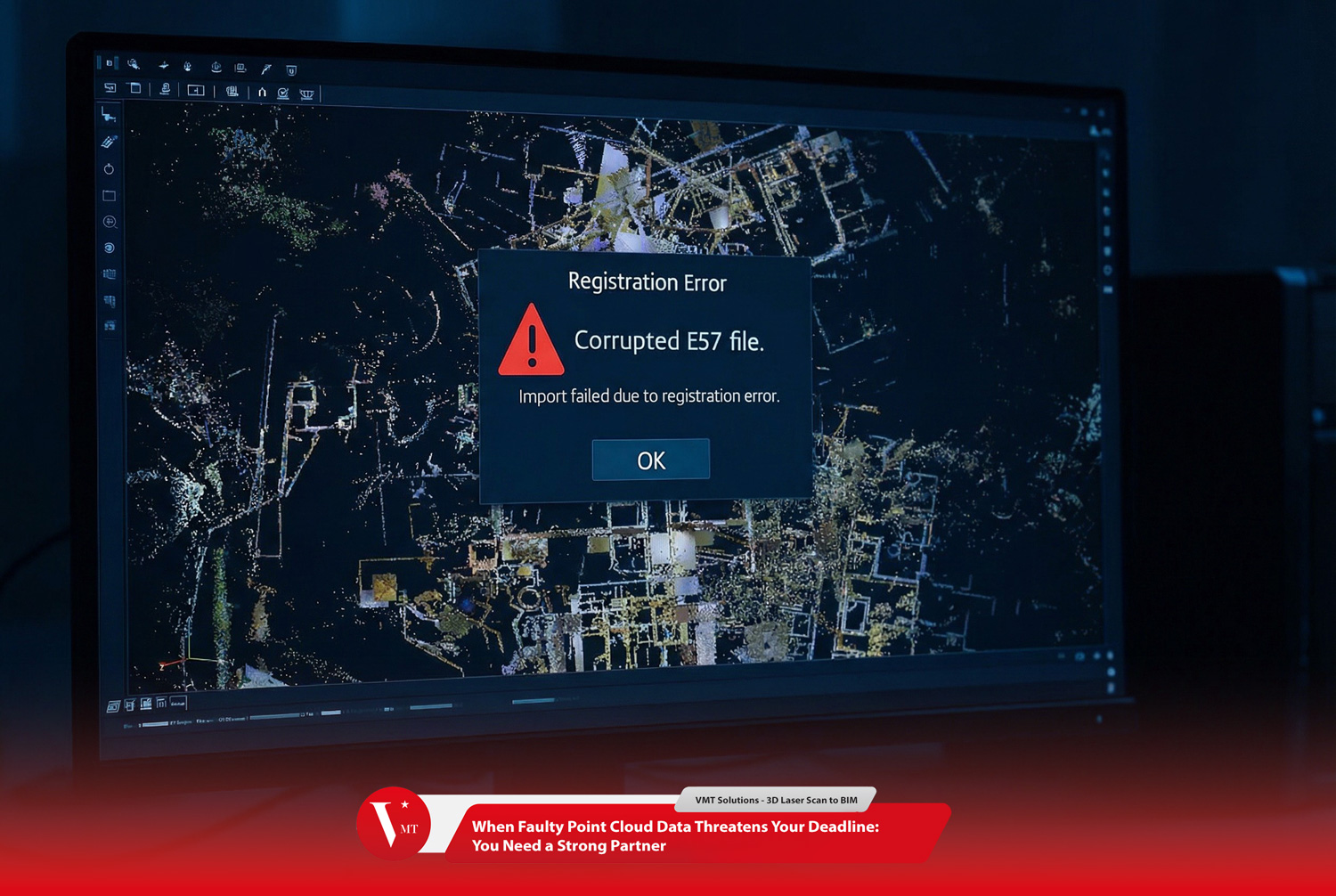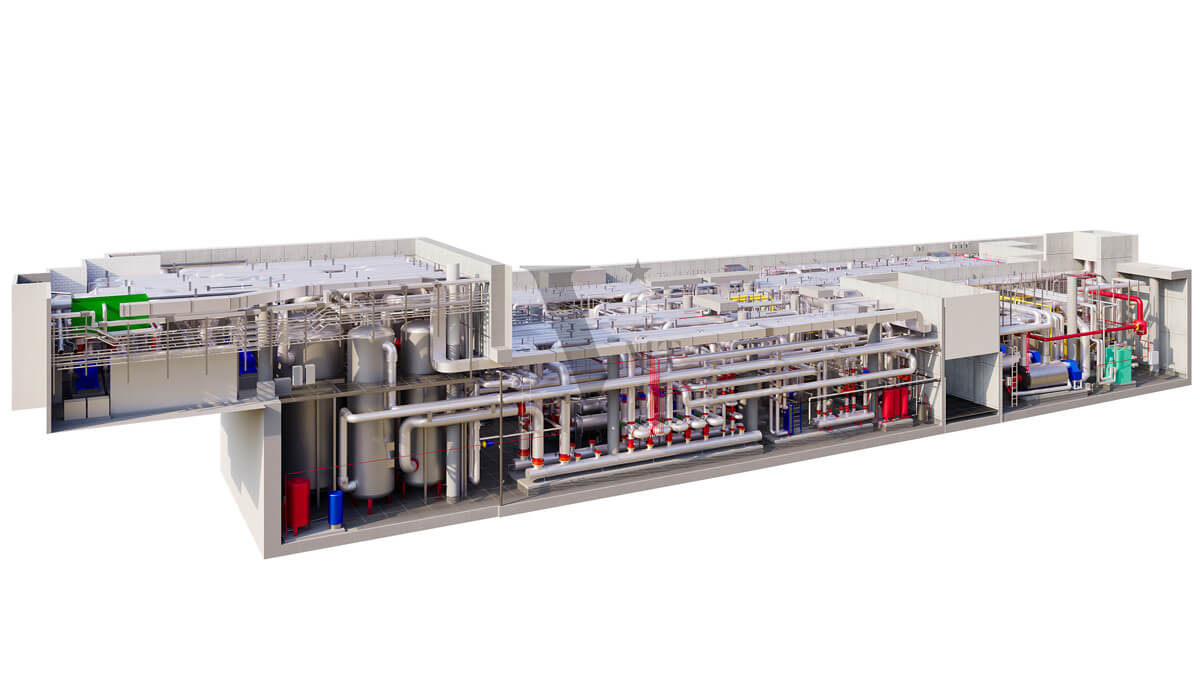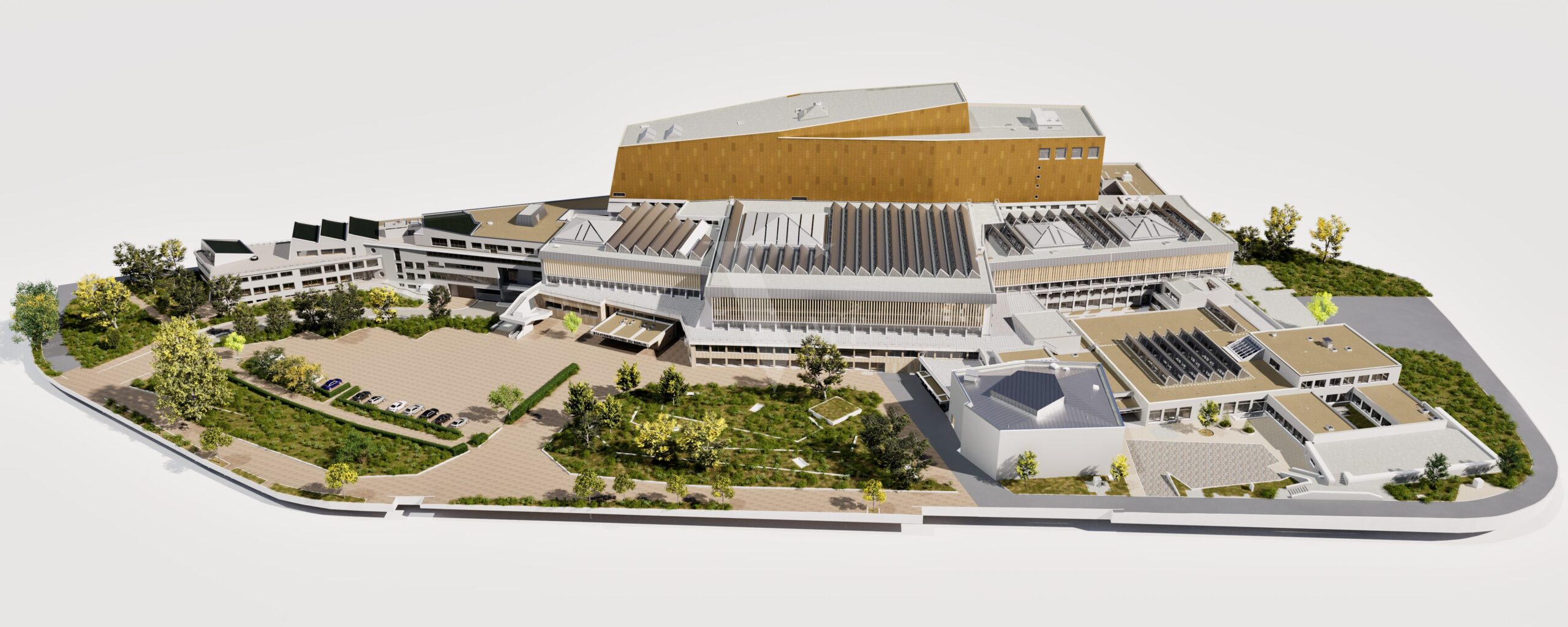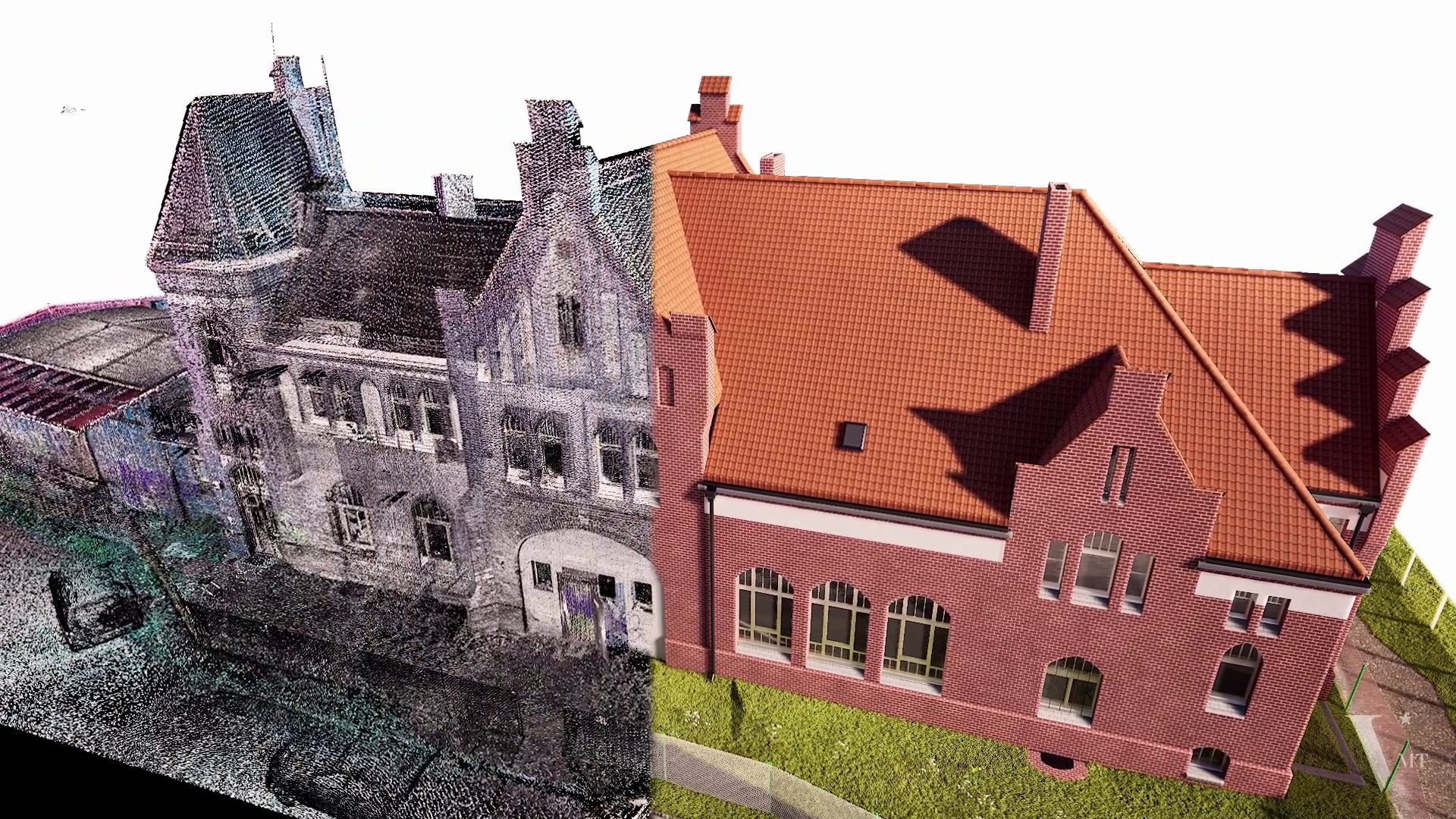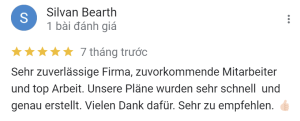The landscape of surveying and construction consulting is undergoing a profound transformation, particularly in the specialized domain of Point Cloud to Building Information Modeling (BIM). A compelling illustration of this shift comes from a recent engagement with a German client. This company, operating with a lean team of just two employees, successfully delivered Point Cloud to BIM projects spanning an impressive 200,000 square meters. This remarkable achievement was made possible through a strategic partnership with VMT Solutions, demonstrating a new paradigm in outsourcing relationships.
This success story is not merely an isolated incident; it represents a significant evolution in how companies leverage external capabilities. The ability of a small firm to undertake projects of such immense scale, traditionally reserved for much larger enterprises, underscores a critical development: the democratization of the Architecture, Engineering, and Construction (AEC) market. By accessing specialized, high-volume capabilities on demand through strategic alliances, agile smaller firms can now compete effectively with their larger counterparts. This indicates a future where agility and collaborative partnerships are as vital as, if not more so than, sheer organizational size. Such narratives serve as potent examples of how a service provider can become an indispensable enabler of exponential growth and market competitiveness for its clients.
Table of Contents
Beyond Transactions: Understanding the Shift from Outsourcing 1.0 to 2.0
Historically, outsourcing was predominantly viewed through the lens of a transactional model, often referred to as Outsourcing 1.0. This traditional approach was characterized by a primary focus on reducing operational costs, with relationships typically short-term and project-specific. In this model, clients maintained stringent control over every aspect of a project, and vendors were primarily tasked with executing predefined requirements. The complete responsibility for project outcomes often rested solely with the service provider, based on their adherence to the client’s explicit instructions.
However, the industry is now witnessing a fundamental shift towards a more integrated and collaborative model: Outsourcing 2.0. This evolving approach prioritizes value creation and innovation over mere cost savings. It fosters long-term strategic partnerships built on mutual trust and shared objectives. In Outsourcing 2.0, collaborative planning and decision-making are central, with partners expected to offer proactive solutions rather than simply fulfilling orders. This model also embraces shared risks and rewards, aligning the success of the service provider with that of the client. The transition from a cost-centric approach to one focused on value and innovation signifies a maturation of the B2B outsourcing market, driven by the increasing complexity of projects and heightened client expectations. This progression suggests that the intricate challenges faced by clients, particularly in highly technical fields like Point Cloud to BIM, cannot be resolved by low-cost labor alone. Instead, they necessitate sophisticated solutions, proactive contributions, and strategic alignment, indicating that the market now demands comprehensive problem-solving and strategic partnership rather than just task completion.
The distinct characteristics of these two outsourcing paradigms are summarized below:
Category | Outsourcing 1.0: The Traditional Model | Outsourcing 2.0: The Partnership Approach |
Primary Focus | Cost Reduction | Value Creation & Innovation |
Relationship Basis | Short-term Transactions | Long-term Strategic Partnerships |
Control & Planning | Client Controlled Every Aspect | Collaborative Planning & Decision Making |
Vendor Role | Vendors Only Executed Requirements | Proactive Solutions from Partners |
Responsibility & Risk | Complete Responsibility Transfer to Providers | Shared Risks & Rewards |
This comparative view highlights the profound differences, underscoring why the traditional model is increasingly inadequate for complex, high-stakes projects.
Why Point Cloud to BIM Demands a Partnership Approach
Navigating Precision, Complexity, and Specialized Expertise
The Point Cloud to BIM industry presents unique challenges that inherently necessitate a partnership-driven approach, moving beyond the limitations of Outsourcing 1.0. One of the most critical aspects is the uncompromising demand for precision. In renovation projects, for instance, a deviation of even 5-7 centimeters can have significant, cascading impacts on the entire construction phase. Millimeter accuracy is not merely an optional feature; it is the fundamental standard required for successful project delivery. This extreme precision requirement means that the cost of errors far outweighs any marginal savings derived from a cheap, transactional outsourcing model. The economic imperative for quality and partnership thus becomes paramount over a singular focus on cost reduction.
Beyond precision, Point Cloud to BIM projects frequently involve complex integration. This typically requires combining data from multiple scanning sessions, utilizing different equipment types, and navigating diverse survey conditions. Such intricate data streams demand a partner capable of managing these complexities seamlessly. Furthermore, the technical expertise required extends far beyond mere software proficiency. A deep understanding is crucial in areas such as various scanner technologies and their inherent limitations, fundamental building construction principles, adherence to international BIM standards (including ISO 19650, AIA, and BSI), and mastery of industry-specific workflows. The mention of specific, globally recognized standards lends significant credibility to the expertise being discussed.4 This comprehensive requirement for specialized knowledge indicates that the true value in this sector lies not just in processing data, but in expert interpretation, astute problem-solving, and rigorous quality assurance. Consequently, the field is inherently unsuitable for commoditized, cost-driven outsourcing, as such an approach would expose clients to substantial project risks.
The Critical Role of Uncompromising Quality Assurance
The importance of quality assurance in Point Cloud to BIM cannot be overstated. Error detection and correction in this domain demand specialized knowledge and extensive experience that are simply not universally available across all service providers. This reinforces the argument that quality assurance in Point Cloud to BIM is not a reactive checklist but a proactive, integrated process. If quality is paramount and inherently difficult to achieve, clients will naturally prioritize providers who can consistently deliver it. This shifts the focus away from cost-effectiveness as the sole or primary selection criterion, elevating quality assurance processes to a position of critical importance.
The necessity of specialized quality assurance implies that trust and reliability become paramount selection criteria, often superseding initial price considerations. This naturally fosters a demand for the long-term, collaborative aspects inherent in Outsourcing 2.0. By consistently producing well-researched and valuable content, a company signals its capability and trustworthiness, which is vital for building strong client relationships.
VMT Solutions: Architecting Your Outsourcing 2.0 Success
VMT Solutions, with over a decade of experience in the Point Cloud to BIM industry, has cultivated an approach deeply rooted in the principles of Outsourcing 2.0. This strategy is designed to address the specific challenges and demands of complex AEC projects, transforming traditional vendor relationships into strategic partnerships.
The Consultative Edge: Guiding Your Project from Inception
VMT’s methodology begins with a robust consultative approach, engaging with clients long before project commencement. Their dedicated surveyor team conducts a thorough pre-project analysis, meticulously reviewing Point Cloud data quality. This proactive engagement allows for early identification of potential issues, which are then addressed with proposed solutions. Furthermore, VMT provides expert guidance on optimal data collection methods tailored to specific building types, ensuring the integrity and usability of raw data from the outset. This commitment extends to knowledge sharing, offering best practices gleaned from hundreds of similar projects.
This proactive engagement, including pre-project analysis and risk assessment, transforms the conventional vendor-client dynamic into a co-creation model. VMT actively participates in problem definition and strategic planning, thereby mitigating client risk and enhancing project outcomes from the earliest stages. This collaborative approach significantly reduces the likelihood of costly errors or rework later in the project lifecycle, a common pain point in complex AEC endeavors. By sharing the burden of identifying potential issues, VMT demonstrates a tangible commitment to shared risks and rewards, fostering the long-term strategic partnerships that define Outsourcing 2.0.
The Quality Partnership: Precision, Reporting, and Continuous Improvement
At the core of VMT’s Outsourcing 2.0 model is an unwavering commitment to quality. The company employs dedicated measurement specialists who meticulously check every detail and correct even minor deviations, adhering to stringent Swiss Quality Standards. This rigorous internal process is complemented by comprehensive reporting, which meticulously documents all adjustments and modifications made throughout the project. This level of detailed documentation ensures transparency and accountability. Moreover, VMT is committed to continuous improvement, regularly optimizing its processes based on learnings from each project.
This rigorous quality process, coupled with detailed reporting and a commitment to continuous improvement, establishes a culture of accountability and mutual growth. Quality assurance is elevated from a mere checkpoint to a collaborative value-add that strengthens the partnership over time. The evolving and improving quality with each project instills client confidence not only in the immediate project but also in the long-term reliability and adaptability of the partnership. This tangible demonstration of shared responsibility and long-term commitment enables clients to enhance project accuracy and confidently expand their market reach, secure in the knowledge of VMT’s consistent high standards.
Transparent Collaboration: Real-time Insights and Adaptive Workflows
Effective communication and transparency are cornerstones of VMT’s partnership approach. Clients gain access to a dedicated portal for real-time tracking of project progress, providing immediate visibility into ongoing work. This is augmented by open communication channels, ensuring regular updates and proactive reporting of any emerging issues. VMT’s operational flexibility allows for adjustments to project scope and requirements even mid-project, accommodating the dynamic nature of AEC undertakings. Post-delivery technical support further ensures ongoing assistance beyond project completion.
This emphasis on real-time tracking, open communication, and flexible adaptation creates an agile and responsive partnership model. It minimizes client anxiety and maximizes project success by ensuring continuous alignment and enabling rapid course correction in dynamic AEC environments. The ability to adjust mid-project and maintain open lines of communication significantly reduces project risk and client frustration, fostering a truly collaborative environment where challenges are shared and overcome together. This stands in stark contrast to the rigid, client-controlled, execution-only approach of Outsourcing 1.0, allowing clients to focus on their core business while maintaining technical excellence.
Technology Integration: Leveraging Innovation for Superior Outcomes
VMT Solutions consistently leverages cutting-edge technology to deliver superior outcomes. Their processes incorporate AI-powered automation for advanced processing, significantly minimizing manual errors and enhancing efficiency. Seamless collaboration is facilitated through robust cloud platforms, ensuring smooth data exchange and project coordination. VMT maintains access to the latest software tools and techniques, ensuring that clients benefit from the most current advancements in the field. This commitment to technology is driven by a continuous innovation focus, ensuring the ongoing adoption of new technologies to stay ahead of industry trends.
VMT’s proactive adoption of advanced technologies, such as AI and cloud platforms, demonstrates a commitment to future-proofing their services and providing scalable, efficient solutions. This approach enables clients to access cutting-edge capabilities without the need for significant internal research and development investment, expensive software licenses, or extensive training. This is a substantial value proposition, particularly for smaller firms, empowering them to scale operations without major infrastructure investment and access specialized expertise on demand. By continuously integrating new technologies, VMT not only optimizes its own processes but also positions itself as an innovation partner, helping clients remain competitive in a rapidly evolving digital landscape, thereby reinforcing the value creation and innovation aspects of Outsourcing 2.0.
Mastering the Market: Trends, Success Factors, and Red Flags
Evolving Selection Criteria: Beyond Just Cost
The outsourcing market is undergoing significant shifts, with industry data indicating a strong trend: 42% of businesses are considering outsourcing in the next 12 months. This widespread consideration reflects a growing recognition of outsourcing’s strategic potential. Crucially, the priorities for selecting an outsourcing partner have evolved significantly. While cost-effectiveness remains a factor, its influence has diminished, ranking at 57% in priority. Far more critical are industry experience, cited by 89% of businesses, communication capabilities (84%), and robust quality assurance processes.
The declining priority of cost-effectiveness relative to experience, communication, and quality indicates a market-wide recognition of the hidden costs and risks associated with transactional outsourcing. This suggests that businesses have learned from past experiences where initial low costs led to poor quality, project delays, and costly rework, ultimately increasing the total project expenditure. Clients are increasingly aware that a “cheap” solution can prove expensive in the long run, particularly in high-stakes fields like AEC. This trend represents a significant market opportunity for providers like VMT Solutions, whose Outsourcing 2.0 model, emphasizing partnership, quality, and communication, directly aligns with the evolving priorities of discerning clients.
Identifying Your Ideal Partner: Key Indicators for Strategic Alliances
Identifying a true Outsourcing 2.0 partner requires a discerning eye, focusing on indicators that signify a commitment to shared success rather than mere transactional engagement. Key partnership indicators include:
Proactive problem identification: An ideal partner anticipates challenges and offers solutions before they escalate. This moves beyond simple service delivery to a strategic alliance where the partner is invested in the client’s overall success, not just task completion.
Industry-specific expertise demonstration: The partner possesses deep, verifiable knowledge of the client’s specific industry and its nuances. This ensures that the partner can provide actionable, relevant information and build strong brand authority.
Transparent workflow documentation: Clear and accessible documentation of processes and progress fosters trust and allows for effective collaboration.
Shared responsibility model: Both parties acknowledge and share accountability for project outcomes, aligning incentives for mutual success. This implies a deeper level of engagement and commitment that fosters resilience in complex projects.
Long-term relationship commitment: The partner seeks to build an enduring relationship, demonstrating an investment in the client’s sustained growth and future endeavors.
Highlighting these indicators educates the market on what constitutes a valuable partnership, subtly positioning providers who embody these traits as ideal choices.
Avoiding Pitfalls: Recognizing Red Flags in Outsourcing Relationships
Conversely, certain red flags signal a potential return to the pitfalls of Outsourcing 1.0, posing considerable risks to clients who fail to differentiate between transactional vendors and strategic partners. These warning signs include:
Price-only competition: A focus solely on offering the lowest price often indicates a compromise on quality or scope.
Lack of quality control processes: Absence of robust internal quality checks can lead to significant errors and rework.
No consultation, execution-only approach: A provider unwilling to offer strategic input or advice, merely executing instructions, limits value creation. This is a “cautionary tale” that demonstrates the consequences of choosing the wrong path.
Limited post-delivery support: The absence of ongoing assistance after project completion can leave clients vulnerable to unforeseen issues.
Absence of industry portfolio: A lack of demonstrable experience in the client’s specific industry sector suggests a generalized, rather than specialized, approach.
Clients who overlook these red flags are likely to encounter the very problems—quality issues, lack of support, and project delays—that the evolution to Outsourcing 2.0 seeks to mitigate. This underscores the importance of client education on the true, often hidden, costs of “cheap” outsourcing. By explicitly outlining these red flags, a knowledgeable guide in the industry not only protects potential clients but also further differentiates its own adherence to the “partnership indicators.”
The following table provides a clear comparative framework for evaluating potential partners:
Category | Partnership Indicators | Red Flags to Avoid |
Engagement Style | Proactive problem identification | No consultation, execution-only approach |
Expertise Level | Industry-specific expertise demonstration | Absence of industry portfolio |
Operational View | Transparent workflow documentation | Lack of quality control processes |
Accountability | Shared responsibility model | Limited post-delivery support |
Relationship Intent | Long-term relationship commitment | Price-only competition |
This actionable checklist assists readers in evaluating potential partners, simplifying complex decision-making and reinforcing the core message about the value of Outsourcing 2.0.
Transforming Business: Real Impact Through Strategic Partnerships
Scaling, Specialization, and Market Expansion: Client Success Stories
The tangible benefits derived from Outsourcing 2.0 partnerships are transformative, enabling clients to achieve strategic objectives previously unattainable through traditional models. Successful collaborations empower clients to:
Scale operations without major infrastructure investment: As exemplified by the German client, firms can take on significantly larger projects without the prohibitive costs associated with expanding internal teams, office space, or equipment.
Access specialized expertise on-demand: This fills critical internal skill gaps, allowing clients to tap into niche knowledge and advanced capabilities precisely when needed.
Improve project accuracy through quality partnerships: The rigorous quality controls and proactive engagement of a strategic partner lead to superior project outcomes and reduced rework.
Focus on core business while maintaining technical excellence: By entrusting complex, specialized tasks to an expert partner, clients can optimize their internal resources, dedicating more time and energy to their core competencies and strategic initiatives.
Expand market reach with confidence in delivery capabilities: The reliability and high standards of a strategic partner instill confidence, enabling clients to pursue larger or more diverse projects and enter new markets with assurance.
These comprehensive advantages demonstrate that Outsourcing 2.0 is not merely a cost-saving tactic but a powerful strategic growth engine. It allows clients to fundamentally redefine their operational models and achieve capabilities that were previously beyond their reach. This represents a profound shift from the transactional model, where the vendor’s impact is limited to the specific task, highlighting the immense value creation inherent in true partnership.
Looking Forward: Building Capabilities Together
The evolution towards Outsourcing 2.0 is a clear reflection of broader industry maturation. As project complexity continues to increase, profit margins tighten, and client expectations rise, the traditional transactional models are proving increasingly insufficient. These outdated approaches are simply not equipped to handle the intricate demands of modern AEC projects, particularly in highly specialized fields like Point Cloud to BIM.
Success in this dynamic environment necessitates partners who fundamentally understand that client success is inextricably linked to their own. This signifies a fundamental shift in the economic incentive structure of the outsourcing relationship, moving from zero-sum transactions to a positive-sum game where both parties are incentivized by shared growth. It is about collaboratively building capabilities, sharing invaluable knowledge, and consistently creating value that extends far beyond basic service delivery. This mutual success model fosters a stronger, more resilient business relationship capable of navigating market fluctuations and jointly pursuing new opportunities, thereby cultivating genuine long-term commitment.
Conclusion: Your Journey to Outsourcing 2.0 Starts Here
Outsourcing 2.0 represents a fundamental and necessary shift from conventional vendor relationships to strategic, deeply integrated partnerships. In highly specialized fields such as Point Cloud to BIM, this advanced approach is not just beneficial; it is a critical enabler. It empowers smaller consultancies to effectively compete with larger firms, all while maintaining and even enhancing stringent quality standards. The overarching imperative is to identify and engage with partners who are genuinely invested in your success – those who perceive your challenges as their own and your growth as a shared objective.
The insights gained from this analysis underscore the transformative potential of aligning with a partner committed to value creation, innovation, and long-term collaboration. This is the future of outsourcing in the AEC industry.
What has been your experience with outsourcing partnerships? The industry welcomes your insights and continued conversation on this evolving landscape.
Ready to explore how Outsourcing 2.0 can fundamentally transform your Point Cloud to BIM projects? A discussion tailored to your specific needs is available.
About the Author:
Nguyen Huynh (Rainer)

As the Co-Founder and Chief Executive Officer of VMT Solutions, SSIFT Vietnam, BlackSwiss Vietnam, and Victoria Measuring Solutions PTY LTD (Australia), I completed my Master’s program in Technical and Vocational Education and Training (TVET) in Germany in 2007.
With over a decade of experience in point cloud processing and BIM services, I am passionate about tackling complex challenges and developing innovative workflows to enhance accuracy and detail in point cloud-to-BIM conversion.
At VMT Solutions, we are committed to delivering high-quality services that provide exceptional value, especially for surveying companies. We focus on building mutually beneficial partnerships, ensuring that our clients receive customized solutions tailored to their specific needs. Every day, I strive to push the boundaries of the industry, continuously improving our methods and exploring new ways to optimize the services we provide.
Recent Posts
Tag Cloud
We are proud to have
satisfied customers.
„Your plans are perfect; I’ve never seen anything like this before. These are drawings of the highest quality, I must say. I want to express my sincere thanks once again for your work.“
VMT modeled a large industrial building in 3D for our research project. We provided DWG plans to VMT, and they delivered a highly detailed model, including the building envelope, interior walls, openings, and stairs. We had previously contracted a German company for the same object, but unfortunately, it didn’t work out. I was relieved and pleased that VMT handled it so reliably. Thank you for the excellent work and the truly fair price!
Very reliable company, courteous staff, and top-quality work. Our plans were created quickly and accurately. Thank you for that. Highly recommended.
Excellent advice and high 3D modeling quality at a great price-performance ratio… What more could you want? I can highly recommend them…


